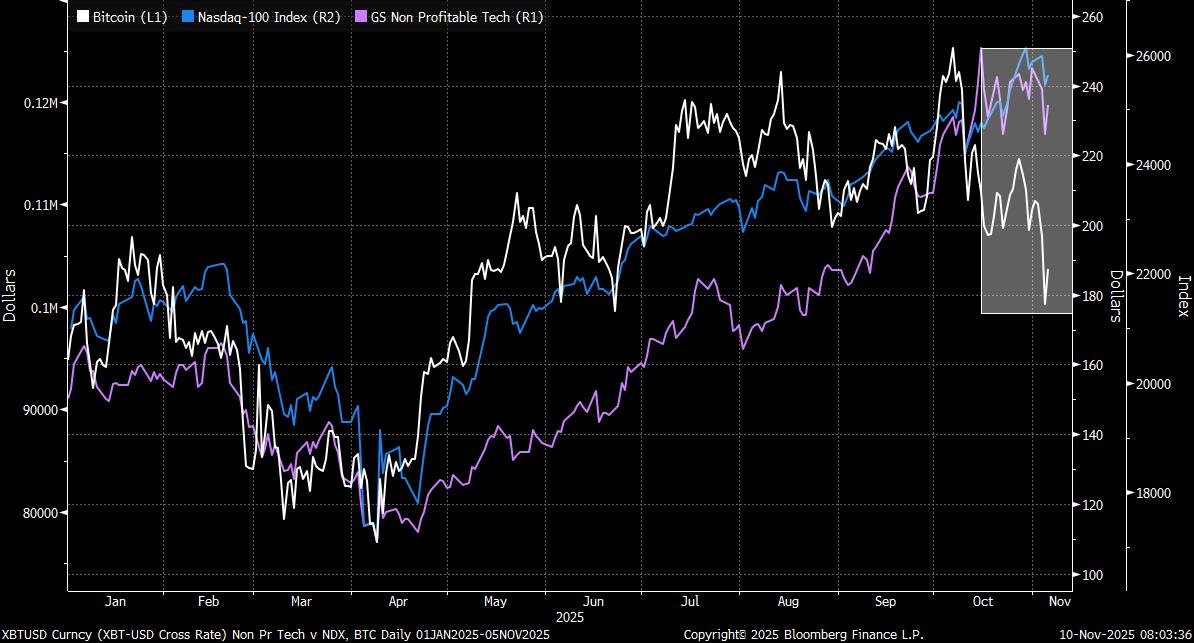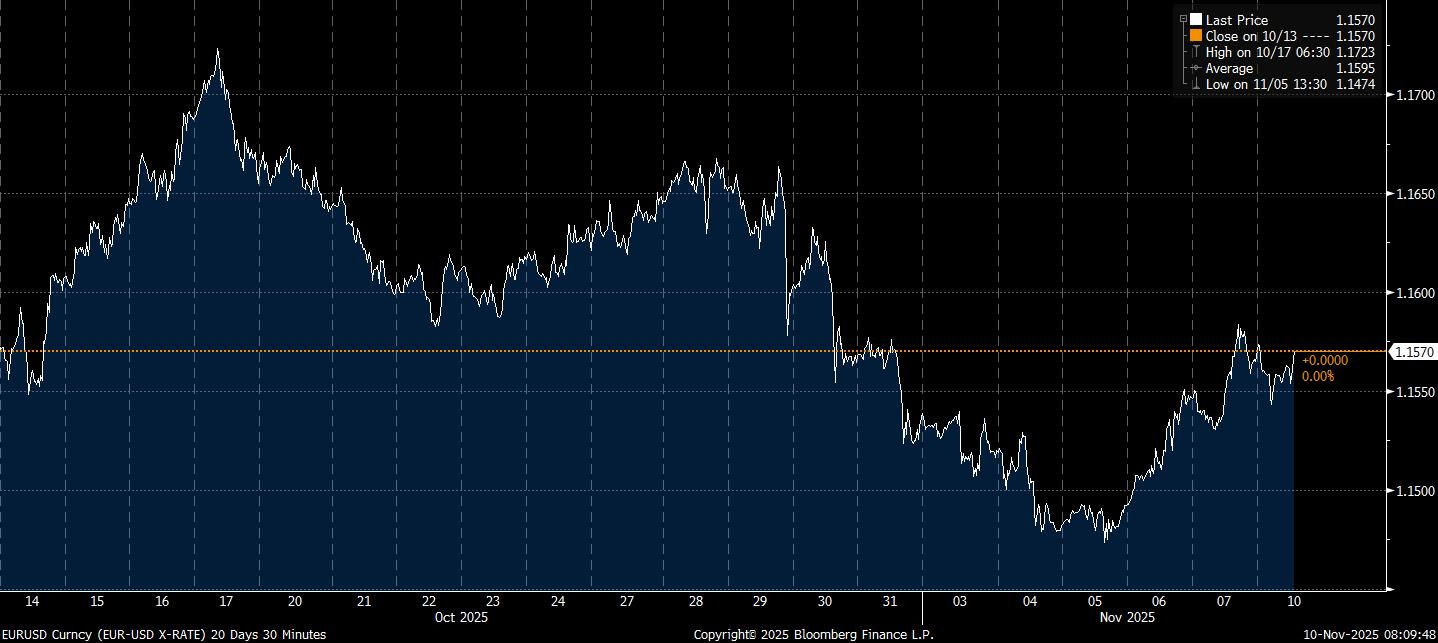In this week’s report:
Fed speakers lead the way on policy as blackout continues
Stimulus checks set up one key idea for the week
Thoughts on NVDA after PLTR earnings
A new FX trade
US equity markets ended the week near the bottom of their short-term range as confidence faltered under the weight of the prolonged government shutdown and renewed questions about the durability of the AI trade. The Nasdaq 100 led losses as mega-cap tech unwound further, with many of the year’s strongest performers now facing their first real test of conviction.
The selling pressure was broad, though notably sharper across AI-linked names, where investors questioned whether the billions being poured into data centres and chips will deliver commensurate returns.
A late-week bounce helped the S&P 500 trim losses as Washington signalled a restart in negotiations to end the shutdown, providing at least a temporary reprieve for sentiment. Energy names led the market as crude prices held firm relative to other risk assets, while crypto saw one of its sharpest drawdowns in months. Roughly $45 billion in Bitcoin has been sold since Oct. 6, an echo of the deleveraging seen in tech as investors take profit in the year’s most crowded trades. If you think that crypto is the tip of the spear for investor animal spirits and risk appetite, it’s probably worth paying attention.
The Supreme Court heard arguments on Wednesday over President Trump’s sweeping global tariffs, signalling for the first time that it may curb the expansive trade powers the White House has wielded since 2018. Several justices suggested the tariffs exceeded executive authority, setting up a potential landmark ruling that could force $100 billion in refunds and dramatically alter the structure of US trade enforcement.
Bloomberg Intelligence’s Holly Froum now assigns a 60% chance the tariffs are struck down, with a decision expected by mid-December. Trump has publicly promised to hold off on new tariffs until the ruling, though markets remain unconvinced.
With the government shutdown freezing official data, markets grew hypersensitive to what little economic information was available. October Challenger job cuts surged to the highest level for that month in over two decades, suggesting a softening labour backdrop. ADP employment rose 42k versus expectations of 30k, while preliminary Michigan Sentiment fell sharply to 50.3 from 53.0.
The dollar mirrored equity markets, weakening in sympathy with risk sentiment, a rare alignment that highlighted the market’s shift away from policy divergence and toward growth anxiety. USD volatility remains subdued near five-year lows, and despite EUR/USD briefly breaching 1.1500, the pair found support and reversed higher by week’s end.
Treasuries finished little changed, with the 10-year yield moving just 1bp lower on the week. The path there was volatile: bonds sold off after the quarterly refunding announcement and ADP data before rallying back on risk aversion. Open interest data showed solid demand for January 113.50 calls—positioning for a 4% 10Y yield—suggesting investors are leaning into a softer December Fed outcome.




